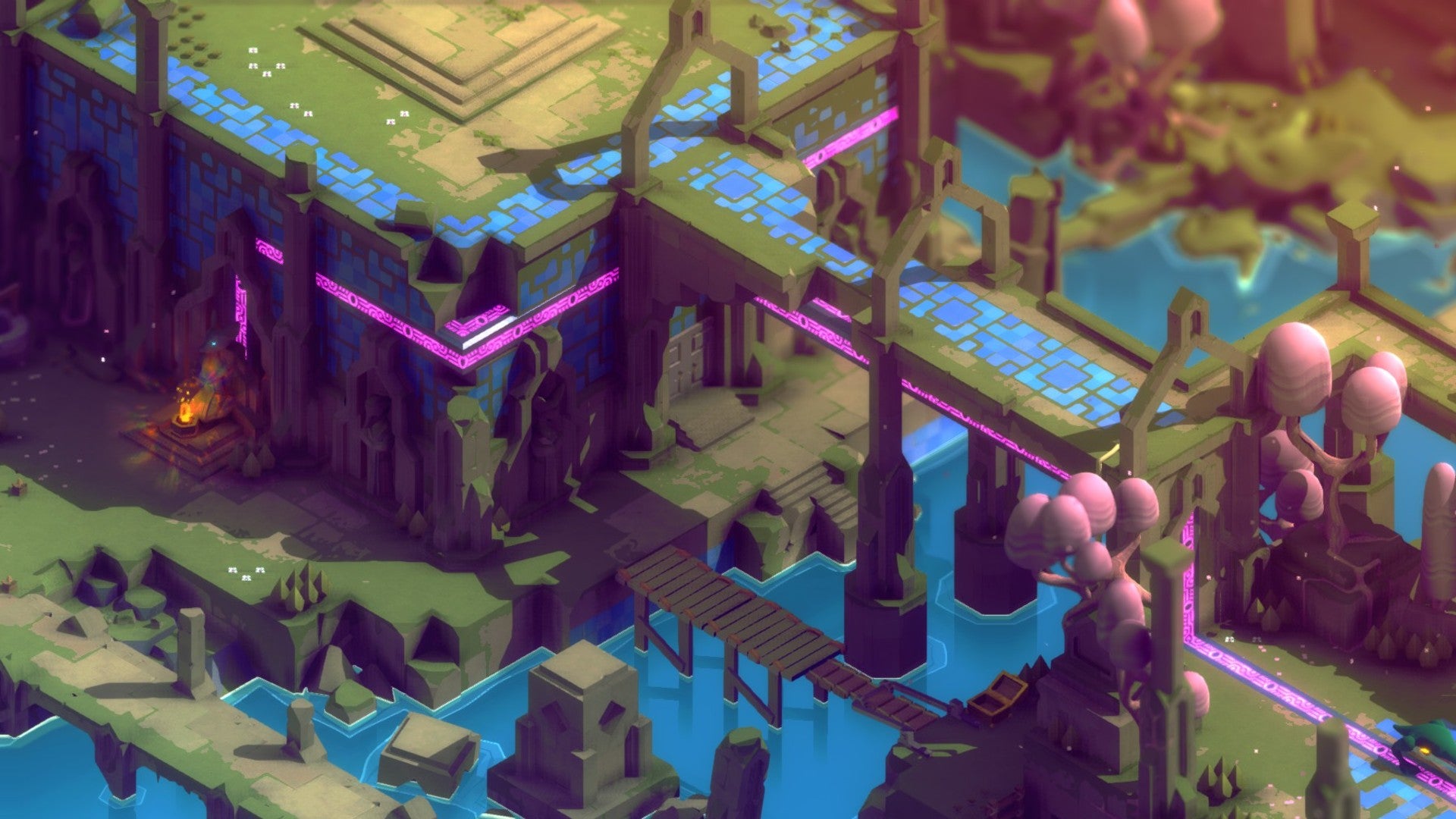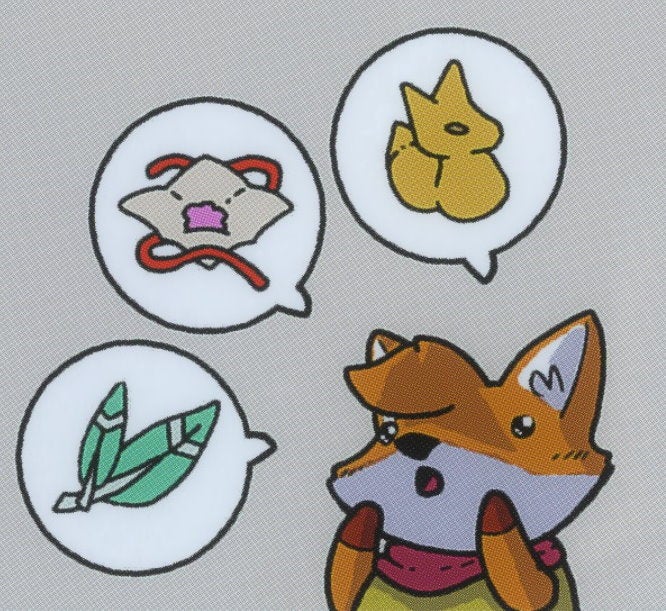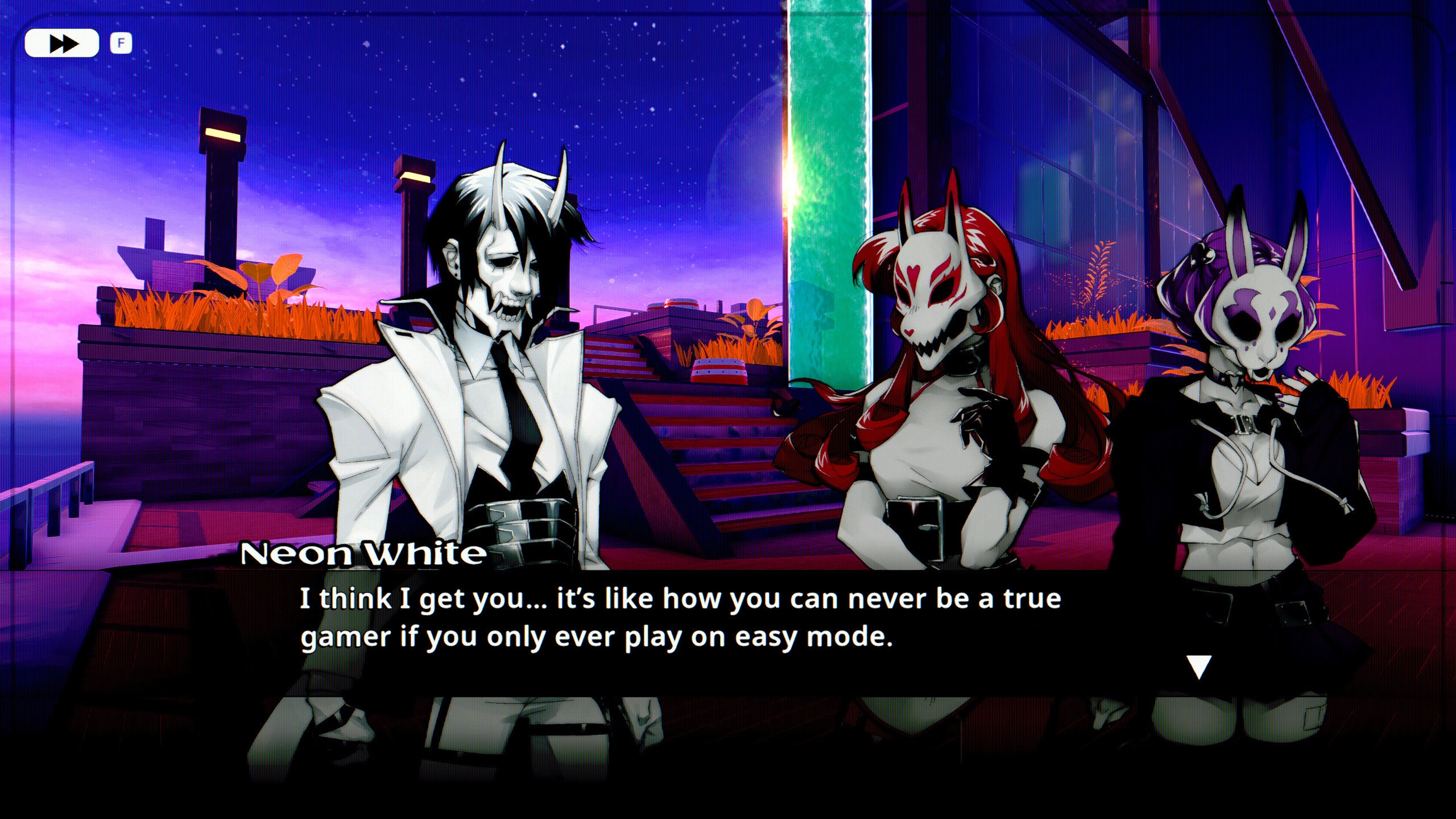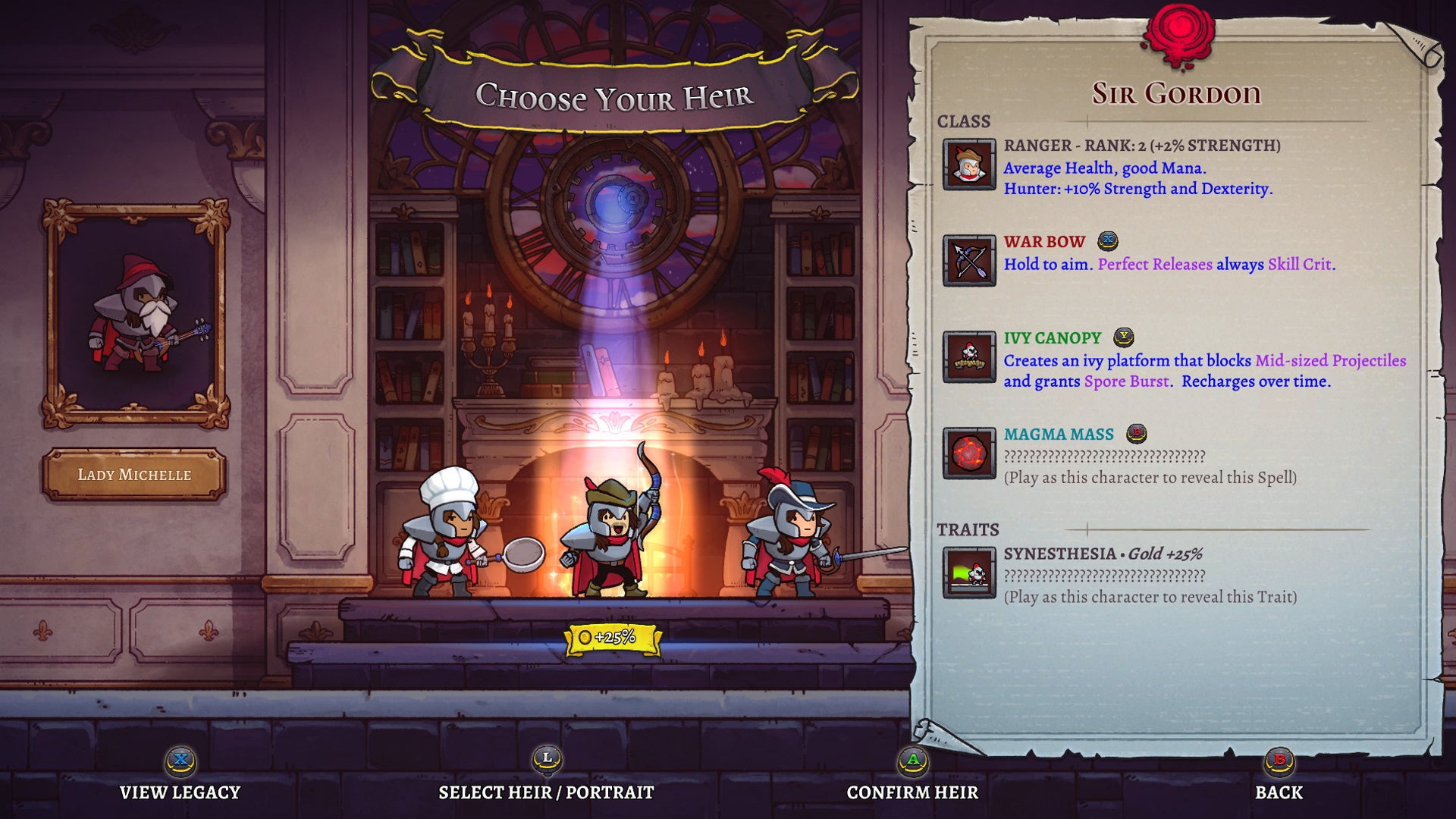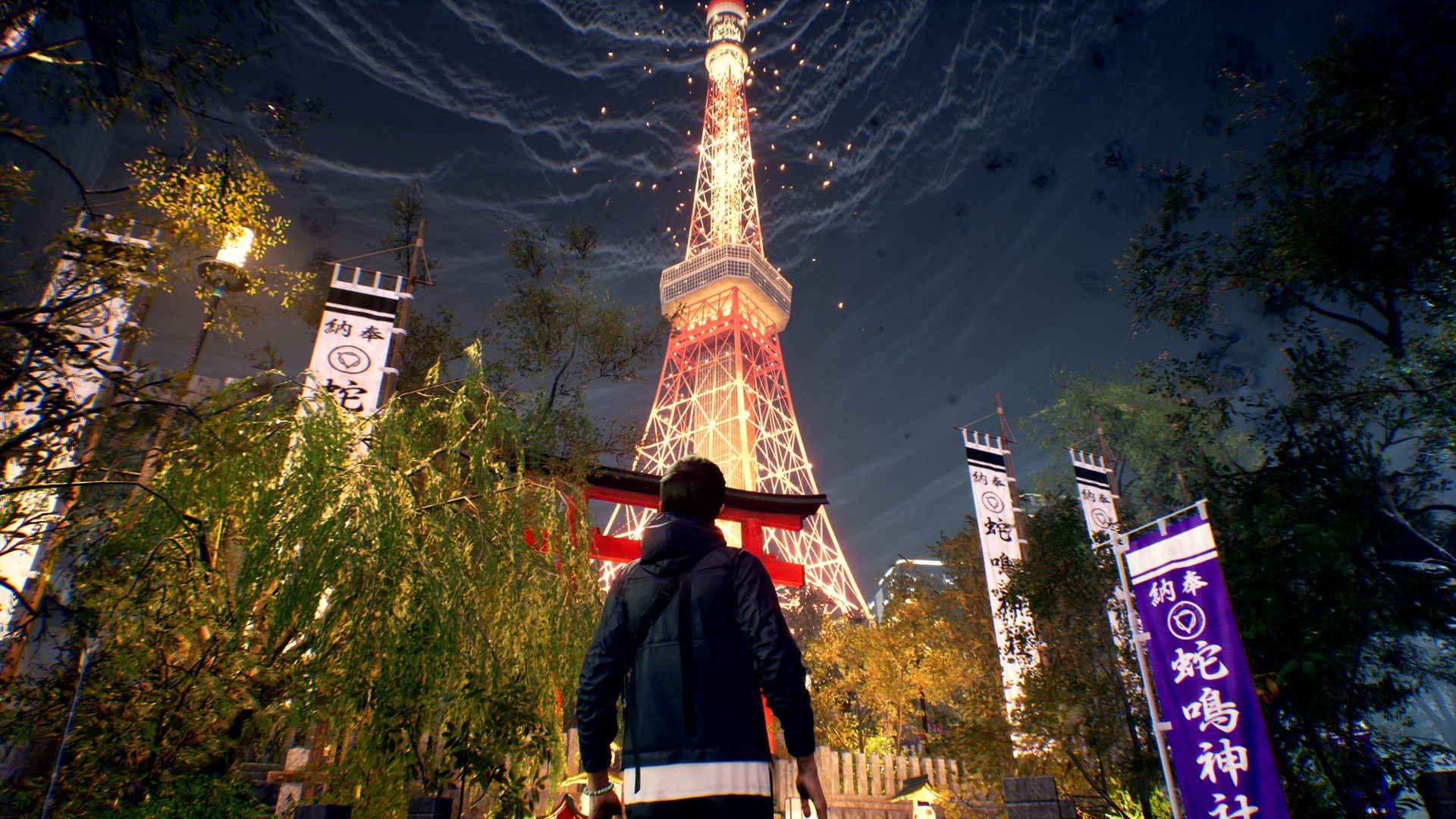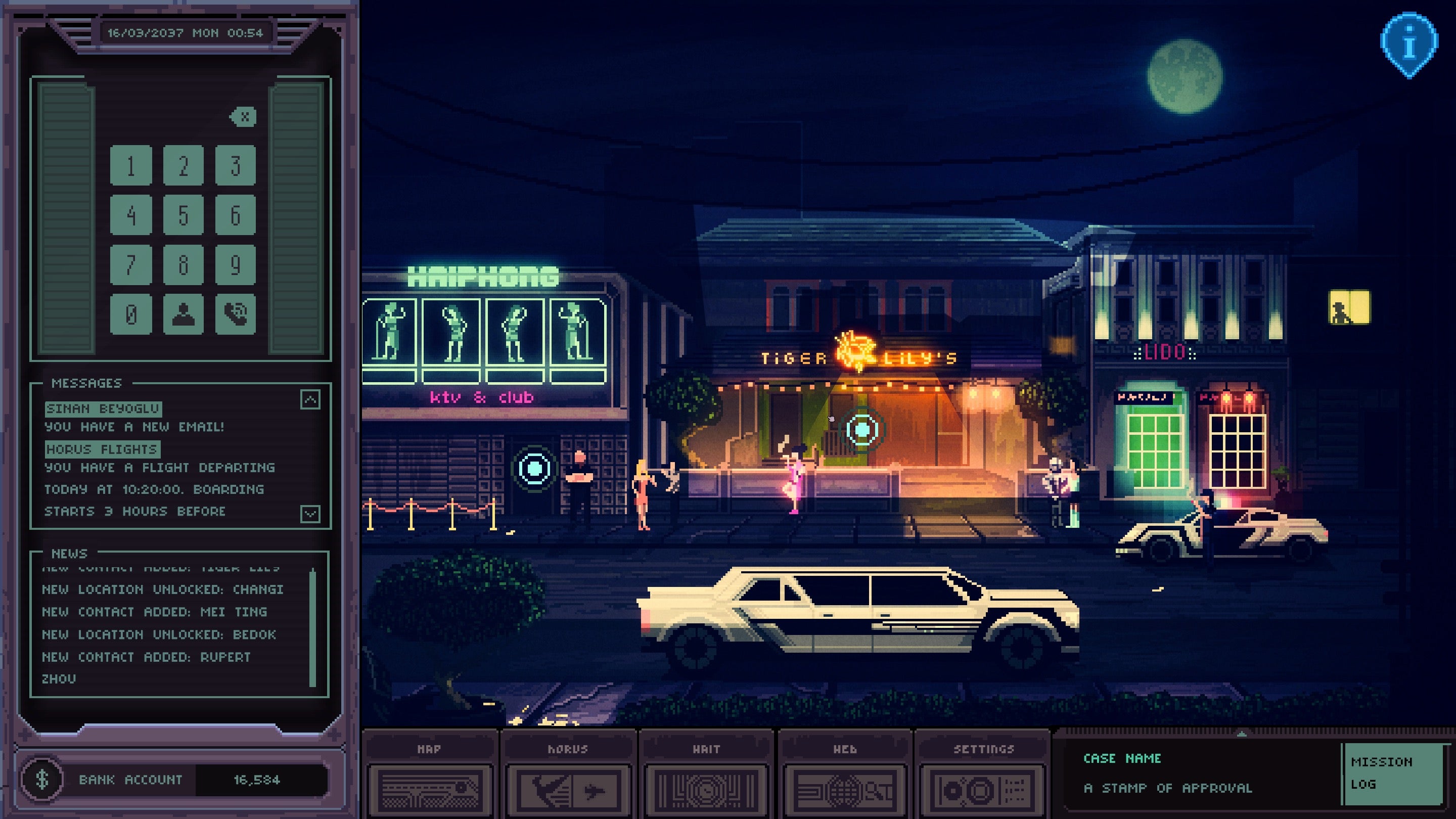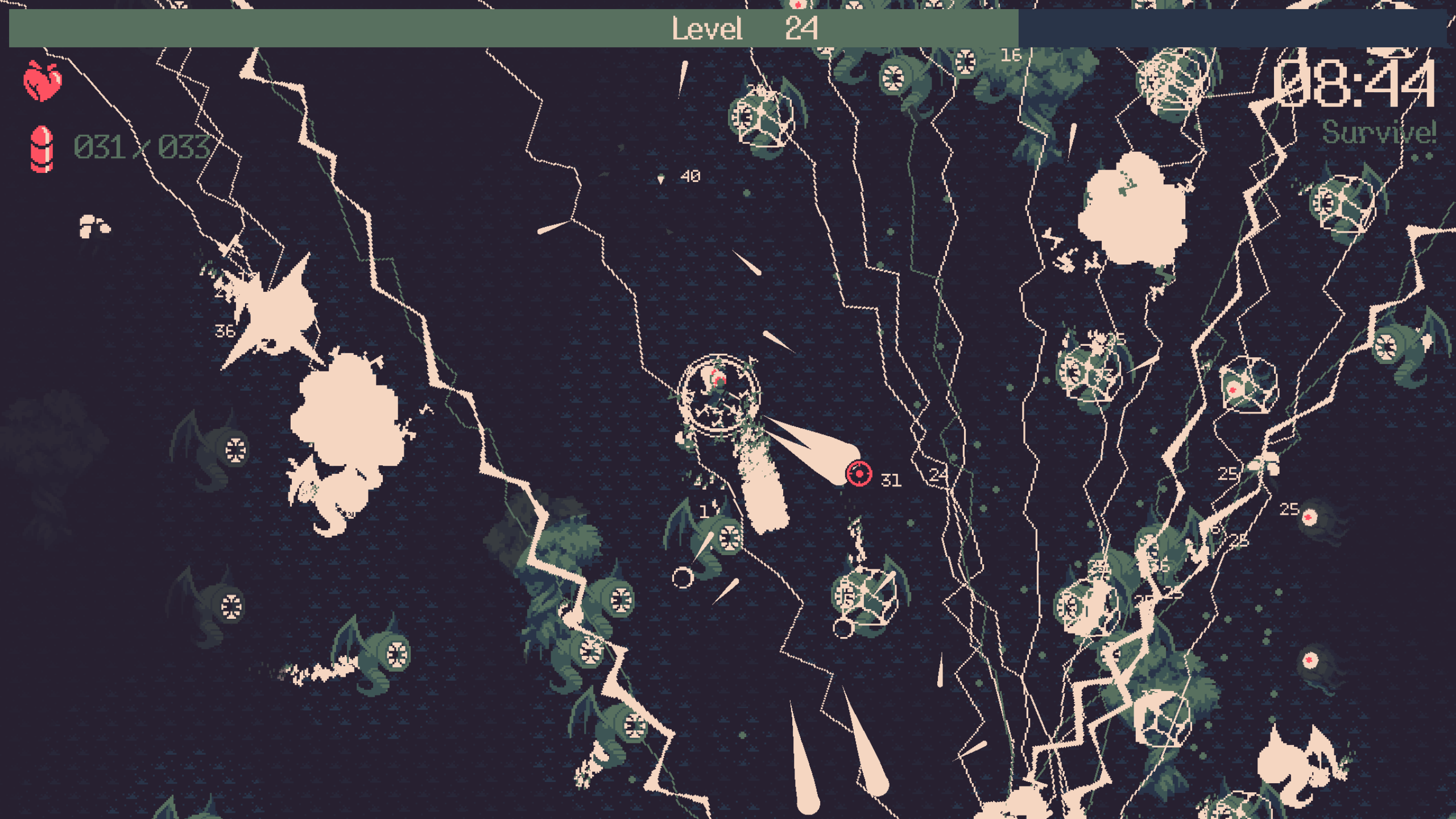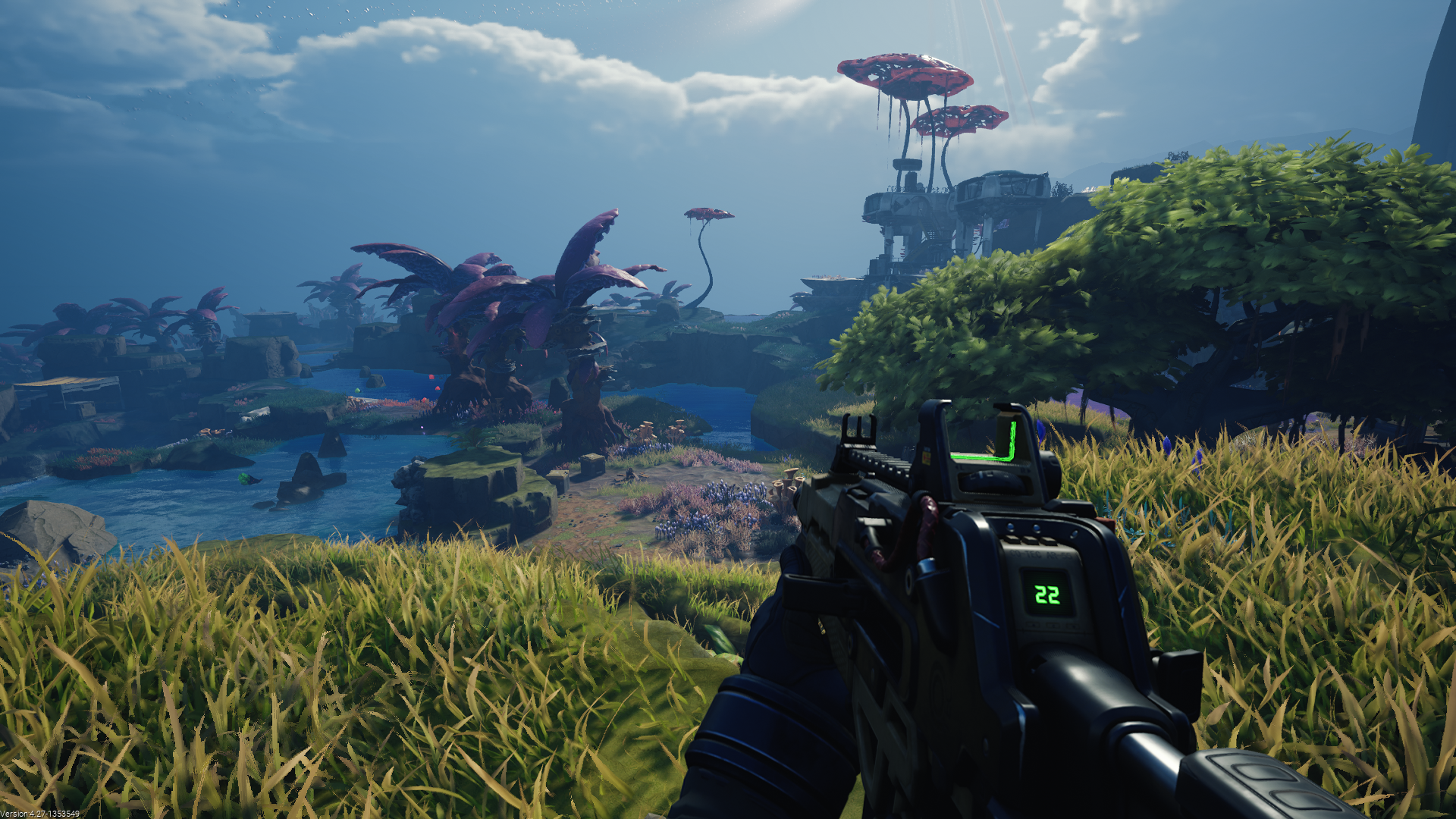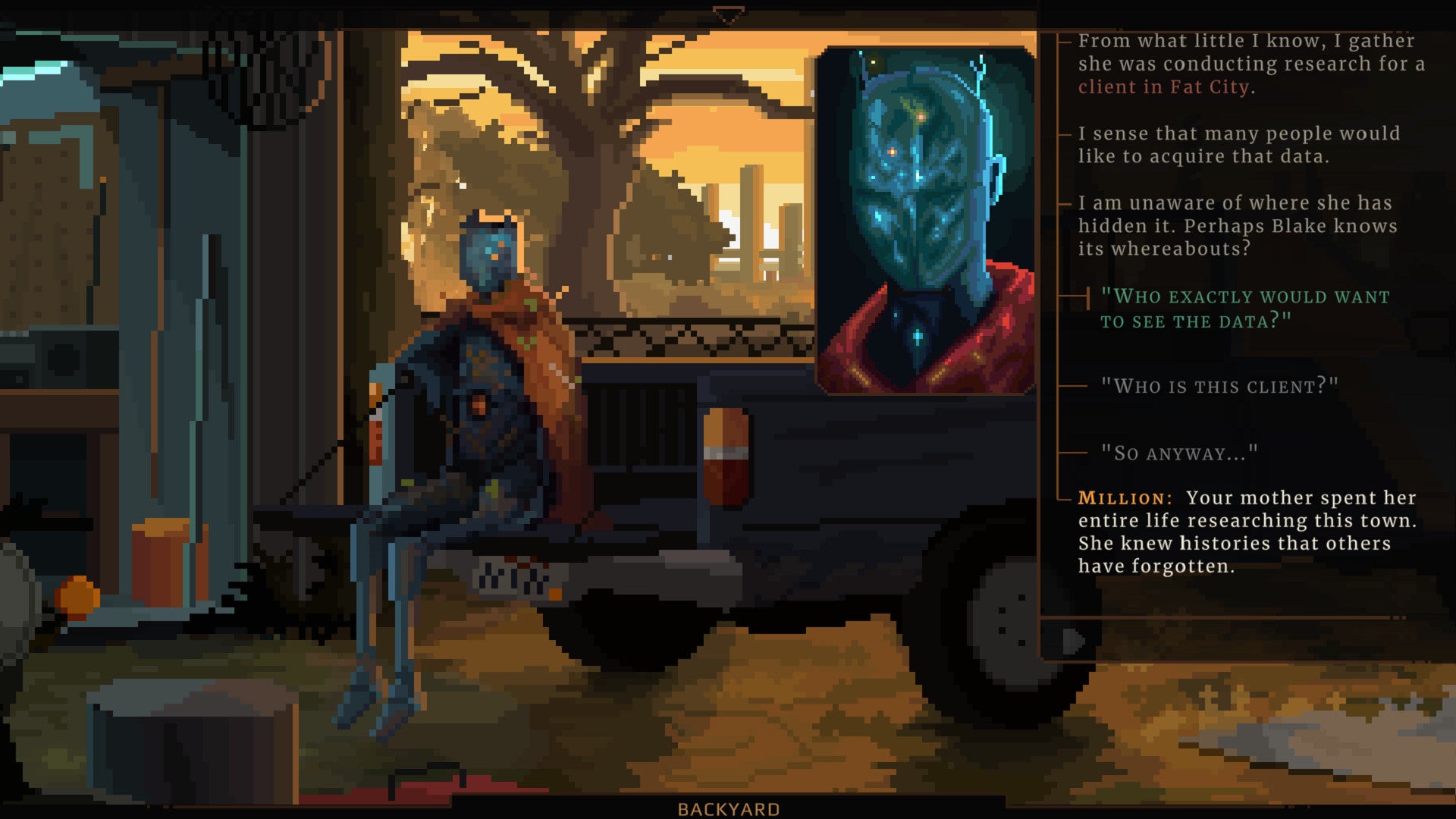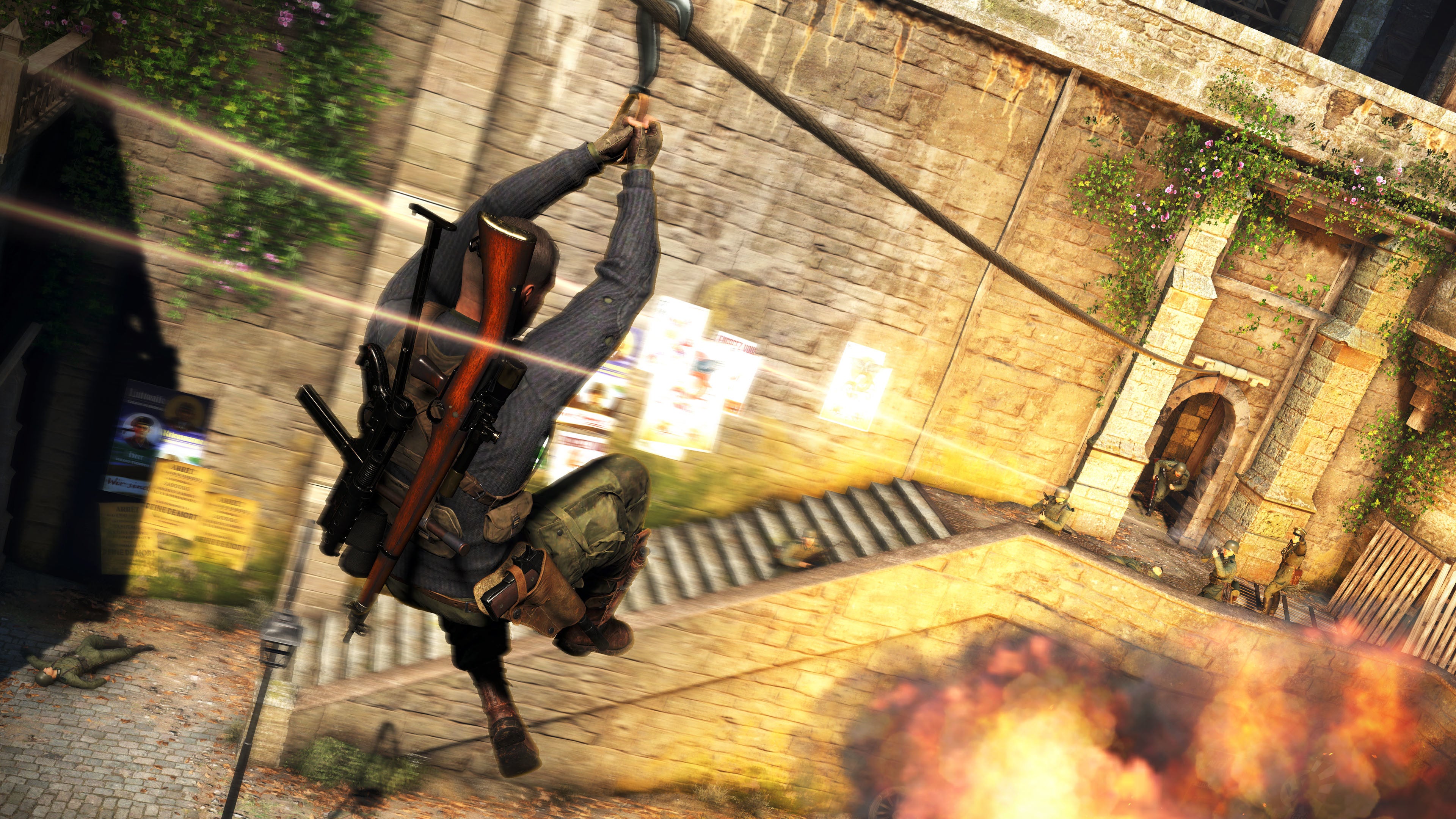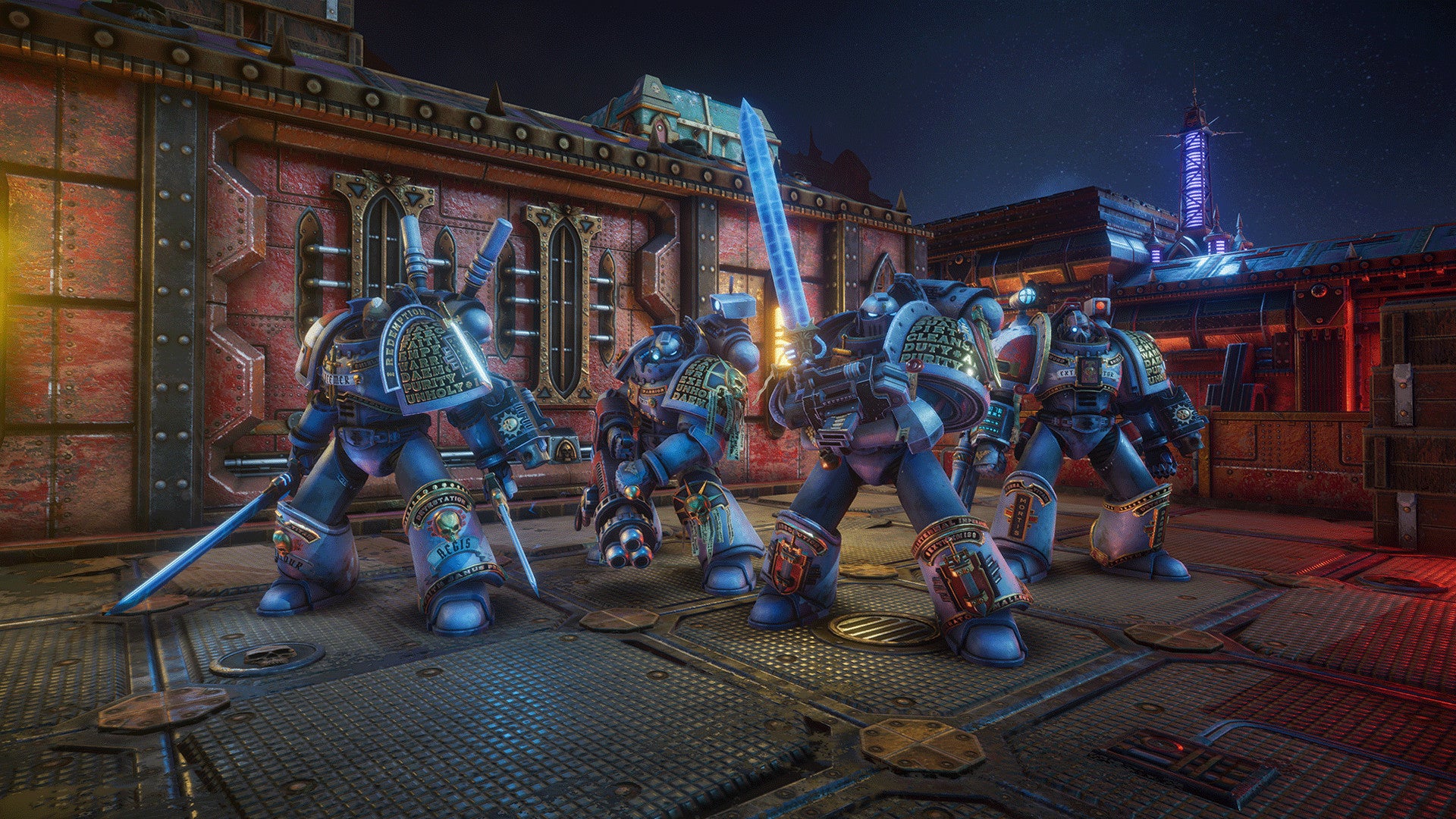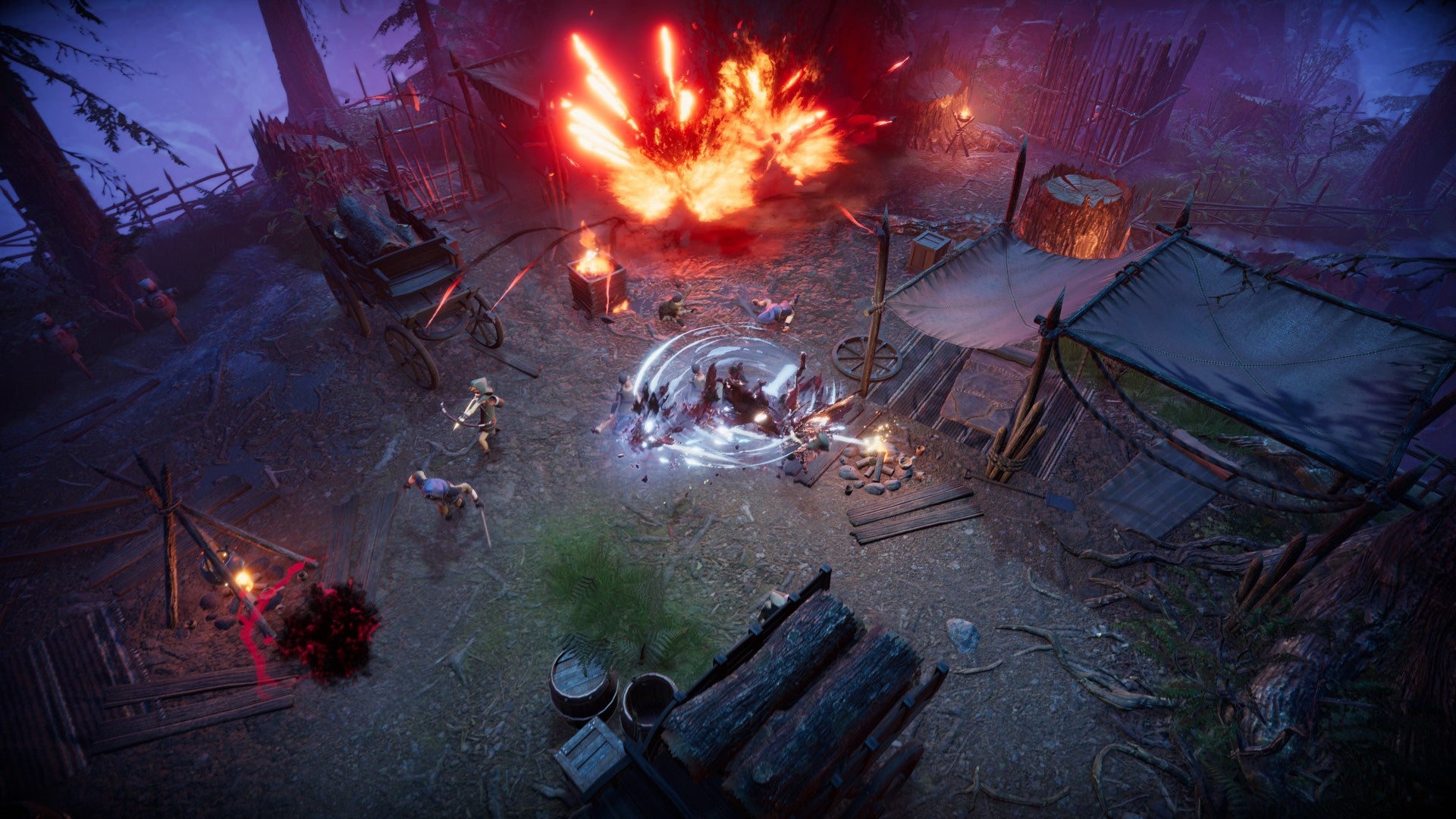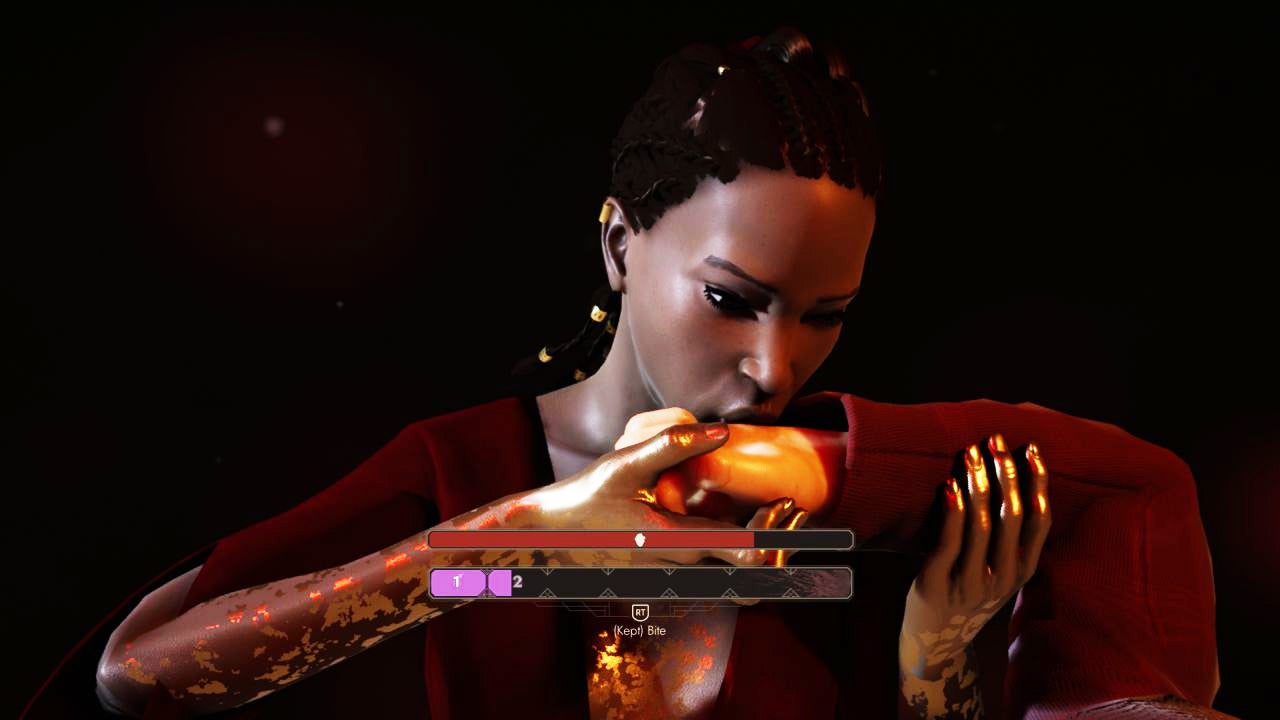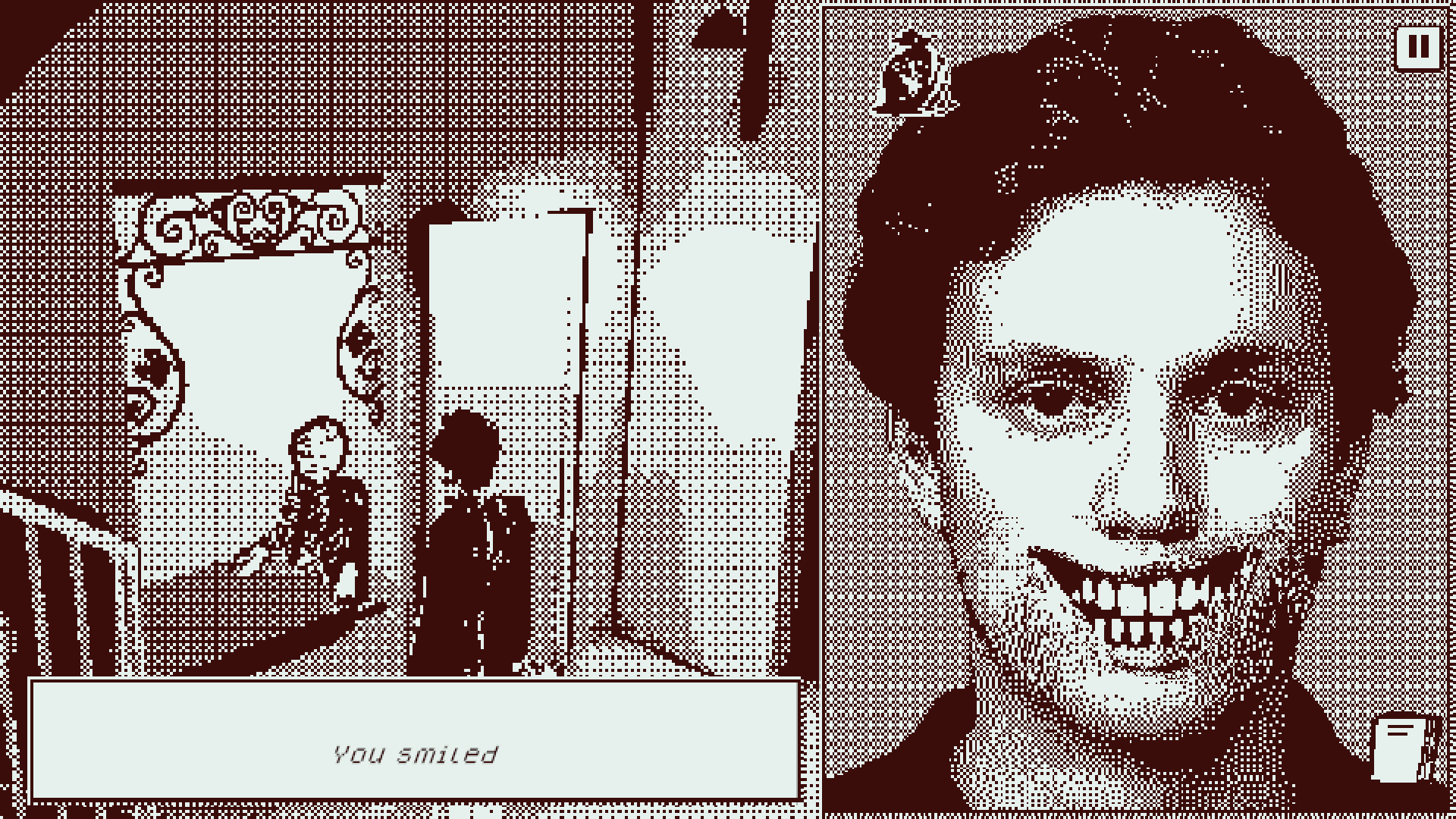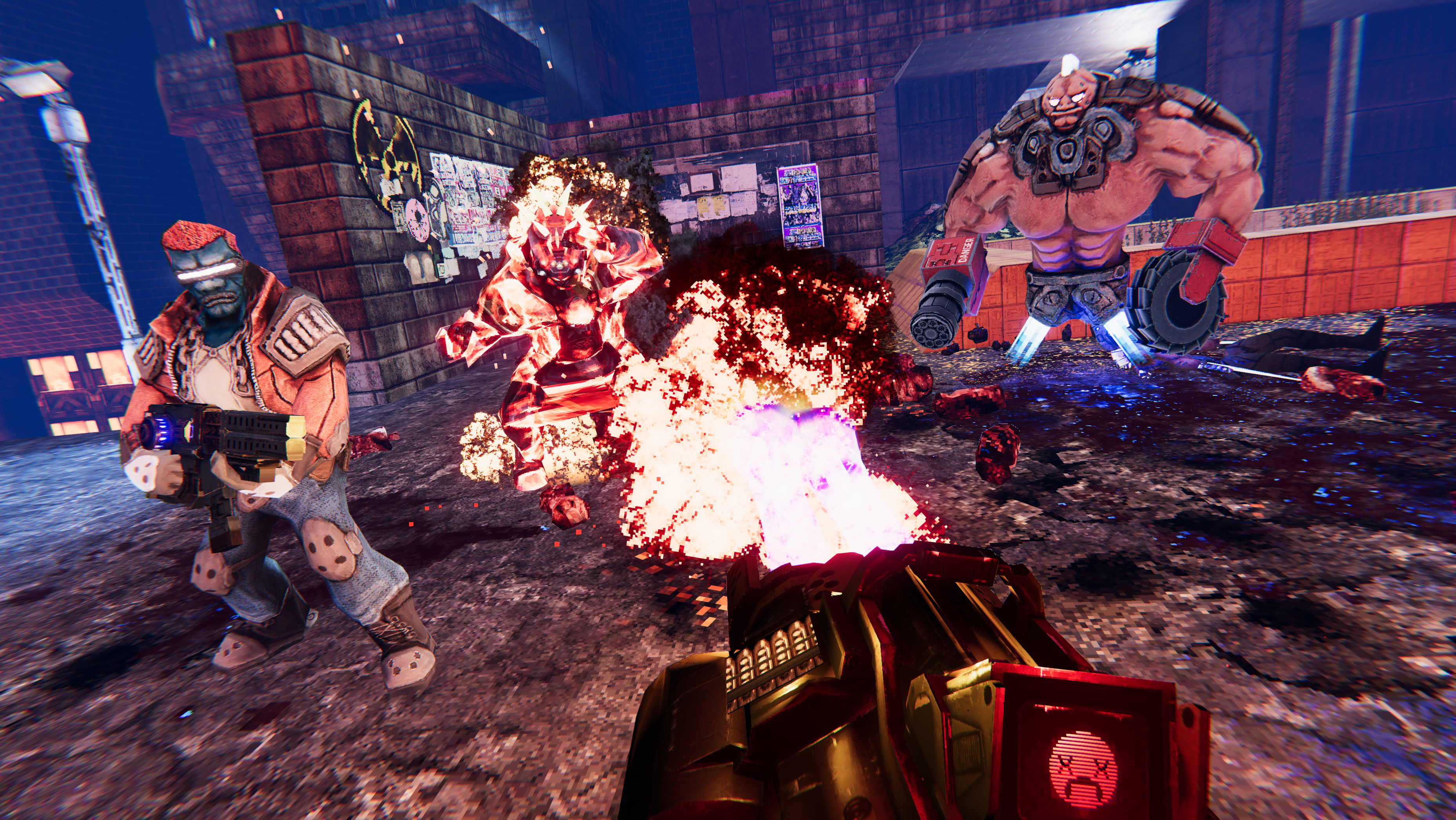Naturally, Elden Ring has been a constant presence in the RPS Treehouse these past few months, but FromSoft’s high fantasy epic is far from the only thing that’s been living in our minds and thumbs rent-free recently. From cosy, early access witch sims to big baroque space marines stomping through the galaxy, the first half of 2022 has been stacked with great indie games, double As, triple Is and all manner of XYZs. Not sure I’ll be saying the same about the second half of 2022 at this rate - every time I look at our release date calendar these days, a tumbleweed inexplicitly passes by my window - but that’s a problem for future Katharine to worry about. In the here and now, though, these are (in no particular order) the 20 games that have kept us busy so far this year - and if you feel like there’s something that slipped under our collective radar, please do tell us about it in the comments below. Keep scrolling to read the entire list, or if you’d rather just skip to the game in question, here’s a handy set of links to each entry.
Elden Ring Tunic Neon White Hardspace: Shipbreaker Rogue Legacy 2 Ghostwire: Tokyo Chinatown Detective Agency 20 Minutes Till Dawn The Cycle: Frontier The Quarry Norco The Stanley Parable: Ultra Deluxe Sniper Elite 5 Warhammer 40K: Chaos Gate - Daemonhunters Citizen Sleeper V Rising Vampire The Masquerade: Swansong Who’s Lila? Little Witch In The Woods Turbo Overkill
Elden Ring
Ed: I still wonder how Elden Ring is possible. Like, how is the game such a monstrous well of things? You swing your rope over the edge and slide down and what you hit isn’t water, but an elevator pad. A pad that leads to an ancient city. And that ancient city leads to a beach with giant crabs. The crabs ingest you, but you don’t die, you emerge in a cave overflowing with exploding maggots. Just to be clear, there isn’t a bit where this happens in game. Or at least, I haven’t discovered it yet. I’ve said it a million times before and I’ll say it again: the game is dense and difficult. Perhaps overwhelmingly so, and especially if you’re a newcomer to Souls. Bosses will kick your ass. Quests are easy to miss. Your character’s stats are a confusing jumble of words and numbers. But its onboarding process is the most approachable of the lot, letting you adventure at your own pace until it clicks. And when it clicks, that’s it! That’s a story to tell! Get everyone round the pub, there’s a discussion to be had. Ollie: I will remember the moment when I finally bested those fucking Twin Gargoyles for the rest of my life. Hours of my life, those bastards took from me. But, like, in a good way. A really good way. I think I ended up playing something ridiculous like 300 hours of Elden Ring. As you’d hope after so much time, I got pretty good at the game. But the enjoyment stayed the same. Whether I was just starting out and dying ignobly to a random soldier, or carving a path hundreds of hours later through some of the most dangerous dungeons in The Lands Between, the gigantic open world to explore, hundreds of incredible bosses to defeat, and scores of hidden quests and fascinating little secrets to uncover never lost their charm. FromSoft’s masterpiece is also their most accessible game yet. G’wan, give it a go. Hayden: At the start of 2022, the RPS Treehouse shared our longest playtimes. My most-played singleplayer game was Assassin’s Creed Origins with 92 hours, and I didn’t expect it to get shattered anytime soon. It’s safe to say that Elden Ring caught me off guard, then. After two months and over 300 hours like Ollie, Elden Ring became my defining anything of 2022 so far. The thing I appreciate most about Elden Ring is its commitment to letting you get a little lost. My earliest RPGs were the likes of Skyrim and Fallout 3, so I’m used to following compass markers around without really appreciating the journey. Elden Ring does things completely differently, and lets you stumble around with minimal guidance. There’s a golden streak that you can loosely follow to head towards the main quest, but everything else is an unmarked mystery that’s begging to be explored. What’s more, new dungeons and areas are often extremely well hidden, meaning you might need to perform some awkward parkour feats if you want to see everything. Sometimes, they’re so hard to find that, for a brief moment, you might find yourself wondering whether you’re the first to discover a new area. Elden Ring’s 12 million+ player count would suggest otherwise, but that split-second reaction of both shock and awe when you notice something new, such as the coffin that you can ride up a waterfall, is unforgettable. Liam: I haven’t played Elden Ring as much as others in the RPS treehouse, but the fact that I - a notorious Souls disliker - played it for longer than an hour is a true testament to just how special this game truly is. I won’t lie, I fucking hated it when I first played it. I spent my first few hours moping around the Lands Between like a moody teenager, cursing every rotten beast that wandered over to smack me about a bit. But then, just as I was about to bin it off completely, I killed an early game boss (some kind of rattish goblin man), and something clicked. I felt… pride? A genuine sense of accomplishment? Like I’d overcome something insurmountable based on skill alone? From there, I was hooked. I haven’t finished it, and to be honest I doubt I ever will, but with 60 hours under my belt I’m more than pleased with the progress I’ve made. GOTY? Probably.
Tunic
Hayden: Like Elden Ring, my love for Tunic stems from the immense sense of discovery that I felt while playing. Tunic’s world is full of mysteries to solve and secrets to uncover, and everyday I’d smash out a new message in all caps to vid bud Liam when I found a new path. Tunic did give me pointers, though, in the form of its in-game manual. As you explore, you collect pages and stitch them together to create a video game manual that resembles something that would come in a box back in the olden days. It contains a bunch of hints and tips, and the more you stare, the more you’ll find. That doesn’t mean I never felt lost, though. Tunic had me stumped plenty of times, sometimes for days on end. That often led to some creative interpretations of its manual pages, and one particular moment felt like incredible luck. In the highest portion of Tunic’s map, there is a huge door on a snowy mountain peak. That door is locked for most of the game, but the manual page depicting the door has secrets to uncover, as always. After staring at it for hours, I decided that the scratches on the right side of this image must be arrows pointing somewhere new, and off I went to investigate. Against all odds, they were arrows. They did point somewhere new. I found a whole new location that took hours to explore. The satisfaction from that moment alone was enough to make Tunic one of my faves for 2022 so far. Oh, and you play as the cutest lil fox in the world. Katharine: Tunic’s instruction manual is a work of art. I’m not just talking about its beautifully illustrated NES era, Zelda II-style drawings. I mean an actual masterpiece of game design wizardry that continues to blow my mind months after seeing the end credits (the real end credits, too, not those other credits). It’s an ode to discovery, distilling that same sense of wonder and excitement of poring over old paper console booklets as a wide-eyed seven-year-old into something digital, while also elevating and iterating on it to make it part of the game’s core puzzle set. To say how would be veering into spoiler territory – so much of Tunic’s appeal comes from not knowing what it’s doing – but the way it drip-feeds you information while still ensuring you have all the tools and knowledge you need at that given moment is just a masterclass in pacing and trusting the player. It’s not often a game makes me feel like I’m forming some sort of secret, invisible bond with the person that made it, but Tunic does that in spades. It’s an absolute treasure, and I wouldn’t be surprised if this was a strong Advent Calendar contender later on in the year. Magical stuff. Liam: Tunic made me gasp out loud in delight at multiple points during my play through. That’s not an exaggeration. I think at one point I even clapped my hands together and went “Ah!” like I was on the stand in an Ace Attorney game. Tunic’s all about moments like this. Most of its mechanics and hidden pathways are available to you from the off and can only be discovered through random experimentation or by examining its gorgeous in-game manual for clues. Tunic doesn’t hold your hand, choosing instead to guide you to your next destination with a quiet confidence that feels respectful of your intelligence. Its goal, it seems, is to cultivate your sense of curiosity by drip feeding you information organically through play rather than via pop-ups or quest markers. It succeeds. Tunic is a genuine journey, a Zelda inspired marvel that arguably rivals Nintendo’s own 2.5D adventures. Oh, and like Hayden says, that fox is properly adorable. I’m a big fan.
Neon White
Alice0: Even a record time didn’t stop me from wanting to further improve my times in this speedrunning FPS. Yeah, the vaporwave Heaven is pretty, and the visual novel about dead anime idiots seeking redemption is fun, but Neon White truly came to life for me when I started pushing to do better. To do really well, you need to spot opportunities to break levels, escape obvious paths, use abilities in novel ways, and that’s when Neon White shines for me. Uncovering giant skips as I repeat levels is a joy, and even spotting opportunities to optimise pathing and shooting with tiny changes is rewarding. What a thrill to realise I can save maybe 100 milliseconds by carefully clipping the edge of a waterfall on my way up to reduce time wasted slowly down in the air! I’ve still not finished Neon White because I’m taking a second pass to bump a handful of silver and bronze medals up to ace medals, and figure out how to get all the hidden gifts which unlock side bits of story. And yeah, on some levels I’ve fallen into trying to go faster and faster for the satisfaction of shaving a split-second, climbing a few spots on the leaderboards, and pushing past the developer times on a few. Certain levels have a flow which appeals to something in my fingers, a timing of bounces, big air, and bullets. What a joy to be an anime idiot zooming through the underbelly of vaporwave Heaven, gunning down demons at 90mph in the hope of crushing my pal’s best time.
Hardspace: Shipbreaker
Liam: I first played Hardspace: Shipbreaker when it launched into early access in 2020. We were still in the thick of the pandemic at the time, stuck indoors during the gruelling first lockdown. I was in a proper funk, unable to find anything that engaged me in a meaningful way. Shipbreaker was the game to finally break me out of that. The trailers for Shipbreaker are quite misleading, I think. They suggest that there’s a level of bombast to proceedings. Fire. Sparking arcs of electricity. Explosions. That’s true to an extent, but destruction isn’t the end goal here. Destruction is the game’s sole fail state, if anything. Instead, Shipbreaker is a game about deconstruction. The art of carefully and methodically stripping a derelict spaceship down to its frame, systematically organising all its disparate components into their designated areas. You are Marie Kondo in a scorch-marked space suit. You heave gigantic panels into an incinerator using a gravity gun. You flush fuel from twisting pipes before recycling them. You detach a thrumming generator from its brackets, gently guiding it to safety at the bottom of your work area as it sparks and groans. I hold all this in my arms and think, yes. This does indeed bring joy. Hardspace: Shipbreaker has replaced Euro Truck Simulator 2 as my go to stress relief game. If I’m having a rough day, I pop a podcast on and spend a few hours cracking open a couple of ships. This shouldn’t be soothing (you’re constantly running out of oxygen! You’re a billion dollars in debt!) and yet its execution is so tactile, so pleasant, it’s been nothing but a cooling balm to me for two solid years. What a game. Alice0: A fantastic game for three of my favourite things: careful planning; destruction that’s more than decorative; and bursting myself through hubris.
Rogue Legacy 2
Ed: Rogue Legacy 2 expands on the sequel in every way and makes for a roguelite that’s not only polished, but respectful of your time. Too often these sorts of games are tremendously tricky, with little recompense for botched runs or quick sessions. Unlike other roguelites, Rogue Legacy 2 doesn’t skimp out on the rewards. No matter if you’ve had a tough run or not, you’ll always feel like you’ve accomplished something, or at least, come away with a few gold coins to invest in countless, branching upgrades. The core gimmick of the series remains fun, too. Each time you die, your children succeed you, meaning the more you play, the spicier the gene pool becomes. You might end up with Dragon Lancers that fart, or Astrologers with upside down cameras, or Tiny Barbarian pacifists. The game incentivizes picking these folks over the gifted bunch, with far better rewards if you steer them successfully through rooms with whirling deathtraps and angry skeletons. Don’t pass up the opportunity.
Ghostwire: Tokyo
Rebecca: As the token resident of the RPS Treehouse who really didn’t get into Elden Ring, Ghostwire: Tokyo was my alternative obsession this spring. Ghostwire has everything for me: elemental powers; eerie demonic ghosts; other, sadder ghosts in need of your help; a nice young man as the protagonist; Cats everywhere. In other words, it sits near-perfectly at the cross-section of all my interests. Ghostwire: Tokyo’s stand-out feature, though, has to be the city itself. Ages back when I first played my all-time favourite game Vampire: The Masquerade - Bloodlines, it was the atmosphere of late-night Los Angeles that so thoroughly captured my imagination. High praise indeed from me, then, when I say that Ghostwire’s recreation of Shibuya gave me the exact same overawed sense of exploring a real city gone sinister as that first video game trip to darkest Santa Monica. It’s a rare game where seeing a new side-quest pop up on my mini-map is a source of real pleasure, but in Ghostwire: Tokyo it signals an excuse to poke my head into another lovingly detailed nook of the city I might have overlooked. Even getting ambushed by a group of Visitors once I get there feels like an invitation to enjoy how fantastically creepy their character designs are. I get the strong feeling this might be one of those rare occasions on which I actually 100% a not-totally-linear game. James: Shibuya is the star of Ghostwire: Tokyo, but I also loved how widely Tango Gameworks drew from Japanese mythology, religion and folklore. From gorgeous Shinto shrines to some grotesque enemy designs, so much of Ghostwire’s world has a story behind it, or at least some kind of interesting inspiration. I even took one sidequest just because it would give me the chance to hang out with an oni, one of the few legendary monsters I hadn’t met yet. Pretty nice guy, too.
Chinatown Detective Agency
CJ: I’m torn over how to recommend Chinatown Detective Agency. Near-future cyberpunk style? Check. Mystery and international intrigue? Yup. Political wrangling that comments on the widening gap between rich and poor? Oh boy, deffo. Inability to manually save until you finish the first three, reasonably lengthy missions? Thanks for that, General Interactive. Don’t get me wrong, I am still picking this for my best game of the year so far recommendation, but I think it’s worth mentioning that there are not inconsiderable issues that narked me while playing it. If you can get past issues like random crashes that ended up locking my private eye in a wine bar when I was trying to snoop at a bartender’s customer records, for example, there’s some meaty adventure gaming to be had here. The voice-acting in Chinatown Detective Agency is marvellous, with player character Amira Darma and her cop pal Justin Koh really standing out. Koh is the dictionary definition of gruff, which is probably something that the game would have you step away from the computer to check up if it wanted to. Research drawn from the real world is a core part of Chinatown Detective Agency, veering the adventure game formula away from LucasArts or Sierra Online classics territory and into neglected Where In The World Is Carmen Sandiego? scrubland. I haven’t had this much fun trying to find out where stamps come from in years. Alice Bee: Life being what it is, these days if you want to actually engage with CDA’s “use real life Google to solve puzzles” thing, you have to be sure to exclude the term Chinatown Detective Agency from your search, otherwise you’re going to get a lot of guide giving you the exact answer. Apart from that issue, Chinatown Detective Agency has some great (if extremely frustrating) puzzles to solve, and it looks really beautiful. I endorse this recommendation.
20 Minutes Till Dawn
Alice0: After Vampire Survivors warmed up the fingers on my left hand for dodging through vast hordes of horrors, 20 Minutes Till Dawn has given the right something to do too. It’s a roguelikelike arena shoot ’em up about simply surviving 20 minutes while assailed by monsters, blasting them open with a gun of your choice to grab XP gems from their guts and level up, unlocking new perks that slowly turn a run ridiculous. Yeah, you might start out wandering in the woods with a simple six-shooter, but within 20 minutes you might be spraying dozens of bullets, icicles, lightning strikes, and fireballs while sprinting around at top (and leaving flames in your wake). It’s Vampire Survivors but you have to aim and shoot, yeah? I mean, it’s also like Crimsonland, and Nation Red, and Nova Drift, but Vampire Survivors is the game I point to right now. I think many people who enjoyed meandering around that game might enjoy taking a more active role in this one. It does soon reach the point where your wizard is hosing bullets or surrounded by an squad of summons fighting for you, pushing it back from shmup territory into more Vampiric realms. Your choice of weapons and wizards influences this too, with a good range of abilities across them which dovetail nicer with some guns than others. So you can pick your starting point and decide a broad direction you want to head in, then you have to roll with whichever options you’re offered from level-up perks. But most of them lead to the screen filling with so many particles that the framerate slows, which is the real victory condition I crave. Good look and all. The music’s great, too. £2 has bought me a whole lot of fun.
The Cycle: Frontier
Ollie: Hyperbole is something that we all slip into when we talk about things that excite us. Take as an example our Can’t Stop Playing series from a couple of years ago. Of course we can stop playing those games. If we couldn’t, then we’d have a problem. With The Cycle: Frontier, I have a problem. This game feels like the multiplayer shooter that I’ve been after for years. Escape From Tarkov always sounds interesting, but it’s just too dense, too intimidating. Hunt: Showdown is marvellous, but its grim atmosphere can take its toll. The Cycle: Frontier is an extraction shooter just like those games – you drop into the map, you loot, and you extract, probably getting into fights with the fauna and other players along the way. But it’s also accessible, characterful, and incredibly tense and atmospheric without ever becoming depressing. By far my favourite things about the game are the maps and the weather. These maps are absolutely gorgeous – overgrown with vibrant flora, and with enough elevation to make the areas look like real natural places rather than arenas. And then you add the dense, moody fogs and the absolutely gorgeous rain which solidifies into torrential thunderstorms that force you to cower inside buildings until they pass. I’ve never known a game to be so tense and so beautiful at the same time.
The Quarry
Rebecca: Supermassive are probably my favourite developers right now, so you can imagine my excitement back in March when they announced The Quarry, a previously (extremely well-kept) secret project that was just three months away from release. A spiritual if not quite literal sequel to their signature interactive movie adventure game Until Dawn, The Quarry once again spares no expense when it comes to its impressive cast list. Legends of horror cinema including but not limited to David Arquette, Lin Shaye, Grace Zabriskie, and Ted Raimi are joined by some of the brightest young things Hollywood has to offer. I’m pretty sure the squeal I let out when I saw that trailer has given me tinnitus that persists to this day. I went into this game as unspoiled as I could manage and wish anyone who hasn’t played it yet the same experience. Suffice to say that The Quarry is Supermassive on top form, bringing their signature mix of camped-up horror movie tropes and shockingly unexpected swerves to the ever-fertile ground of a classic summer camp slasher setting. Despite the knowingly corny premise, though, I think this might be the most disturbing Supermassive game so far; but in the ultimately good “gut-wrench that stayed on my mind for a few days” way, not the bad “that upset me deeply and I really wish I hadn’t had to think about it” way. One final note: it was refreshing to see Supermassive finally introduce some explicitly LGBTQ+ characters into their extensive canon, an especially welcome touch since The Quarry’s launch happened to coincide with Pride Month. Hayden: When I played Until Dawn back in 2015, I often wondered about what would happen if I failed a QTE to hop over some branch or pull a door handle. The trivial stuff, the moments that seem ridiculous to even slow down to a QTE. Back then, I was too obsessed with trying to get a perfect run to risk such silly errors. When The Quarry launched, I vowed to play differently. I wanted to take it a little slower and resist the temptation to react to things immediately. Maybe, just maybe, I’d even fail a QTE or two on purpose, for the thrills. After the first hour, I realised just how difficult it would be to honour that vow. The main crew in The Quarry are a loveable bunch, and watching them awkwardly navigate their high-school romances had me enthralled. I wanted happy endings across the board. But I’d made a commitment to chaos and mistakes had to be made. Watching them get slowly picked off as I purposefully failed certain scenarios was gut-wrenching, which shows how much I’d grown to love them. Taking this approach with The Quarry did have its benefits, though. I haven’t spoken to anyone else who failed quite so dramatically. It helped me see just how different each playthrough of The Quarry could be, and it’s the first game in a long time that I’m itching to replay. Alice0: I’m just delighted to see Ted Raimi. Hi, Ted Raimi!
Norco
Alice0: I haven’t finished Norco but it is, so far, one of my favourite games of the year. In the aftermath of her mother’s death, Kay returns home to the Louisiana town she ached to leave, only to find her brother missing and many mysteries awaiting. It’s grounded in the present reality of a town overshadowed by a refinery, nudged into the future with robots and the progressing horrors of rampant capitalism, and pushed into supernatural territory by… I’m not sure. I’m not sure about a lot of this game. I don’t yet know quite what it is and how it works, and I like that. It is an adventure game with familiar adventure game puzzling, but also I have an RPG-style party and got past one person by beating them up using my childhood teddybear in QTE-based combat? Kay can talk to herself about topics to reveal connections and decide how she feels about them, but is this change reflected in the game or simply in my experience of it? After a conversation about parents dying from cancer, I petted a cat so hard that it shot through the bookshop ceiling and left, in its place, a collectible phone case shaped like itself? At one point, I shaped a story I was being told by driving a boat around the fractured narrow waterways? I am certainly interested enough in the plot, and enjoying the writing enough, to see my adventure through Norco and New Orleans to the end.
The Stanley Parable: Ultra Deluxe
Liam: I’m going to keep this brief, because it’s hard to talk about The Stanley Parable: Ultra Deluxe without spoiling it. Like the original, this expanded re-release / remaster is so tightly designed that there isn’t a second of waste throughout its entire runtime, with each joke a little reward gleefully handed to the player for simply being curious. Did you go down a corridor you weren’t supposed to? Have a little joke. Did you hop out of a window and fall below the level geometry? Oh, go on, have a jaunty little song. See? I’m spoiling it already. I told you. It’s hard. It’s very funny, basically. An absurd, self-referential delight. True, this is by and large the same game as the 2013 original, but the way it implements its new content is very silly and very good. In fact, I’d probably go as far as to say that the game is designed to be enjoyed as much by those who played it a decade ago as total newcomers. Stanley, and the game itself, are revered by Ultra Deluxe in such a way that makes revisiting this world and these characters (including a surprise new one) a genuine treat. It’s a truly wonderful way to spend an afternoon.
Sniper Elite 5
James: I had to be roped into playing this by a co-op minded friend, and any reticence now feels like narrow-mindedness on my part. Sniper Elite 5 has been a joy: each mission ebbs and flows effortlessly between slow, cerebral sniping and the fast, tense moments of up-close stealth that somehow demand cleaner execution than a 350m longshot. It’s tense, and smart, and very often hilarious – a tonic for my decade-long fatigue with WW2 games. I’ve seen comparisons to Hitman, which make sense given the mostly open levels, sneaking emphasis and high-priority targets. But an ‘ideal’ Hitman run usually involves quietly taking out two or three individuals and slipping away; in Sniper Elite 5, wouldn’t it be better if the entire map was cleared of Third Reich bastards? And so, every single enemy becomes a fun little puzzle to solve, usually with his nearby mates, searchlights and tanks making sure the solution is more involved than just slotting his nads from a mile away. Not, uhhh, that it’s been removed as an option. The map designs also make sure it’s no turkey shoot, adding challenge though their management of sight lines but also granting opportunities: a tricksy traversal route here, a hidden weapons cache there. How well these spaces balance scale with intricacy is a big part of how I can happily spend two hours per mission without it feeling like a slog, as is the gradual, organic-feeling expansion of secondary objectives that pop up through found intel and looted officers. It’s immensely satisfying to cross these off with considered plans of attack, though improvising can be key to success as well. One of my favourite moments was chancing upon a meeting of German and Japanese officers, who all started pacing towards a single car; remembering I’d passed a Panzerfaust on my way inside, I rushed back in panicked giggles to grab it, then returned to blast the entire axis of assholes just as they were pulling away. It’s still a stealth op if there are no witnesses, yeah?
Warhammer 40K: Chaos Gate - Daemonhunters
Katharine: If you’d asked me three months ago what my 2022 comfort game was going to be, I’d have said cosy village builder Dorfromantik in a heartbeat. I still turn to Dorf a lot when I’m sat at my desk, but when big recent life events have pulled me away from home and shuffled me over to my Steam Deck, it’s Warhammer 40K: Chaos Gate - Daemonhunters that’s picked up the slack. An odd choice, perhaps, when it’s largely about stopping a terrible plague spawn from corrupting an entire galaxy’s worth of war-torn planets (and in the game, etc), but hey, sometimes there’s solace to be found in slowing taking it in turns to splatter demonic priest guts across the wall and inching up a map in waves of overwatch cones, you know? Even if I wasn’t appropriating it as a weird kind of emotional crutch right now, though, Chaos Gate - Daemonhunters is just a rollicking good tactics game in its own right. I’m no Warhammer head, but even I love its gothic excess and attention to detail. It’s deliciously over the top, and the way my Grey Knights can soak up hits means I can play more unpredictably without having to hug knee-high cover walls all the time. There’s a great sense of freedom in Daemonhunters, and it really does make for some wonderfully thrilling battles. The number of times I thought I was done for but somehow managed to pull it back from the brink is just phenomenal in this game, and that sweet taste of victory is exactly what I need right now.
Citizen Sleeper
Rachel: I feel like cyberpunk games have become this weird combination of glossy, neon-soaked cities complete with flashy guns, grungy alleyways, and nine times out of ten it’s raining. It’s a persona the genre has adopted in recent years and although Citizen Sleeper falls into a similar cyberpunk vein, it feels distinctly different. It’s a scrappy, gritty, survival sci-fi game whose characters are desperately trying to live on the fringes of an intergalactic capitalist society. Playing as a digitised consciousness in an artificial body, Citizen Sleeper is about beginning your new life as a runaway AI on a strange space station, hoping to escape the mega-corp that’s trying to hunt you down. Staying under the radar and making ends meet is part of your survival, and you’ll need to survive purely off gig work, assigning dice rolls to tasks that will earn you some quick cash. Each new day triggers new events, letting you get to know this unruly backwater space station and its residents, but one bad dice roll could potentially lead to starvation or being discovered. Even in this hopeless situation, you’ll find compassionate people. There’s a sense of silent companionship between the shuttle’s residents who have all found themselves washed up here, and the relationships you make and its sense of community sit right at the mechanical heart of the game. You’re not playing as a loveable anti-hero, battered mercenary, or super slick computer hacker - you’re a gig-worker living paycheck-to-paycheck in an unforgiving world. That’s the kind of cyberpunk game I want to play.
V Rising
Ollie: We’ve all said quite a lot about V Rising already, it seems. What a lovely spin on a survival game, where your greatest enemy is the sunlight, and the sun is an actual object that revolves around the world so that the shadows are always changing and you’re not safe until you have a roof over your head. Or until night falls, of course. That’s your time to shine. And by shine I mean drink the most potent blood you can find, and then do a spot of copper mining, like all vampires are wont to do. V Rising has got to be the most polished survival game I’ve ever played. It’s not entirely free of little bugs and flaws, but then survival games are usually more jank than game. V Rising’s combat feels exciting and punchy, the building is very reliable (something I don’t think I can say about any other survival crafting game I’ve played), and the map is absolutely jam-packed with interesting bosses. 37 bosses on day 1 of an Early Access title. C’mon. That’s a crazy amount of content.
Vampire: The Masquerade - Swansong
Rebecca: Looking back on my path through the first six months of the year, I can see it’s strewn with titles I’ve played once or twice and then never gone back to. But anytime I left Vampire: The Masquerade - Swansong alone for a few days, I’d find myself compelled to consciously carve out time to get back into it. My love for all things Vampire: The Masquerade is well-documented, and Swansong isn’t shy about throwing you in at the deep end regarding its lore. But for me the really great thing about Swansong is that, like Big Bad Wolf’s debut The Council, it resolutely refuses to hold your hand when it comes to puzzle-solving. Documents you read aren’t recorded for ease of reference; quest objectives are broad and don’t guide you to the full solution, just to the simplest possible resolution. This can of course be frustrating, since you don’t know if you flubbed a mission until it’s too late; but on the other hand, it’s been a long time since I experienced the high of putting my real-life pen-and-paper notes together and genuinely unravelling a mystery under my own steam. One of the reasons I kept coming back for more had to do with a very real fear that I’d lose track of all my clever deductions if I left it for too long, since they were only recorded in my own head. Admittedly, Swansong didn’t intrigue me quite as immediately or intensely as did The Council, but it’s a worthy second game from a studio I’m eager to see more from, and does some cool things with one of my favourite IPs. Alice Bee: One thing I really like about Swansong is that the vampires in it are all really over being vampires. Like, they’ve lived for decades, if not hundreds of years, and hate watching people they like die, and accidentally turning assholes into vampires or having messy breakups with another bloodsucker, and then those people being around all the time, forever. Some of Swansong was janky, but for sheer “Life sucked, and then I died” energy I have to give its vampires a solid 10. Similarly, the powers you get in it are less badass action and more practical, almost mundane, but they still do a good job of making the world through a vampire’s eyes seem like a sort of fantastical toy. I loved one mission where I could follow the resonances of certain scents through the air, all of them a different coloured sparkling trail weaving through an apartment.
Who’s Lila?
Alice0: On the face of it, Who’s Lila? is an adventure game with a fun gimmick: rather than pick dialogue options, you drag your fella’s facial features around to form expressions which set his tone in conversation. Tug on William’s mouth, eyes, eyebrows, and such and you can make him act happy, surprised, angry, scared, or disgusted, or just leave him neutral. That’s fun. Isn’t that fun? It is not fun. Who’s Lila? is a surreal horror story, drawing from David Lynch with high school drama, murder, and otherworldly forces. Something is very wrong, and uncovering all the secrets will require inviting the game into your world. Who’s Lila? has multiple sub-endings, each revealing another facet of the plot, perhaps another way things could happen, or maybe it’s all real, or none of it, or… I don’t know. You can bumble your way to many of the little endings, discovering possibilities and secrets and oddities simply by playing and trying different things. Then start a new playthrough and try something new, carrying over knowledge and sometimes even items. And the big weird picture gets complicated once the game starts pushing against the fourth wall, needing you to do things on your PC and in your browser, wrapping another layer of reality around the plot and trying to engulf you and your computer in that. This can lead to fun “Aha!” moments when you hit a revelation in your detective work, though I am surprised that many of its secrets were ever found. I feel no shame in having looked up some parts. I really dig the look too, a two-tone dithered style pulling some strange faces and with a particularly unnerving look to 3D cutscenes.
Little Witch In The Woods
Alice Bee: Little Witch In The Woods is still in early access, but it’s already so cute and so expressive and just so fun. I’ve run out of synonyms for “witch” and “wood” so I’ll just say that in Little Witch In The Woods you are a little witch who lives in the woods. You take over an empty cottage and start exploring the surrounding area, which includes a cursed village covered in vines. Naturally, you will break the curse. But first you must follow instructions in your spell book to make potions. And for those you also need ingredients! Raw ingredients can be harvested from plants and animals, many of the latter being absurdly cute. My favourite are the chubby lizards that sunbathe by the lake, and emit happy bubbles if you rub their tum tums. Some things are just your traditional squashed frog type of deal, requiring you to creep up and catch something in your net. But you can think laterally about stuff too, and throw a potion that might have an interesting effect on the birds that come out during the day, for example. Little Witch In The Woods has a full day and night cycle, with some flowers only opening at night, and that sort of thing. It’s quite a simple loop, as you gradually get more tools to catch stuff and access to more ingredients and spells. But it’s also, and I don’t know how to adequately communicate this, very funny. Not in the sense that it has a lot of jokes in the script, but in the sense that every single animation is, I’m convinced, deliberately hilarious.
Turbo Overkill
Ed: You have a chainsaw for a leg. Katharine: A chainsaw. For a leg!


